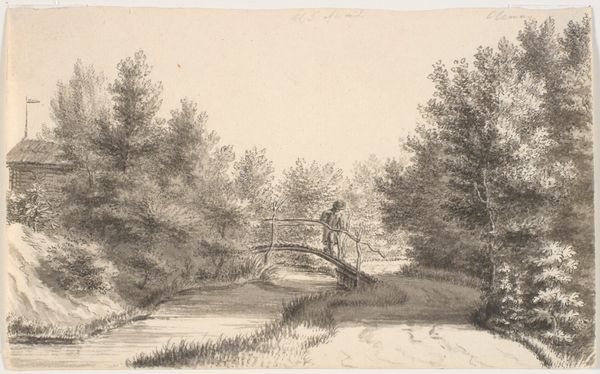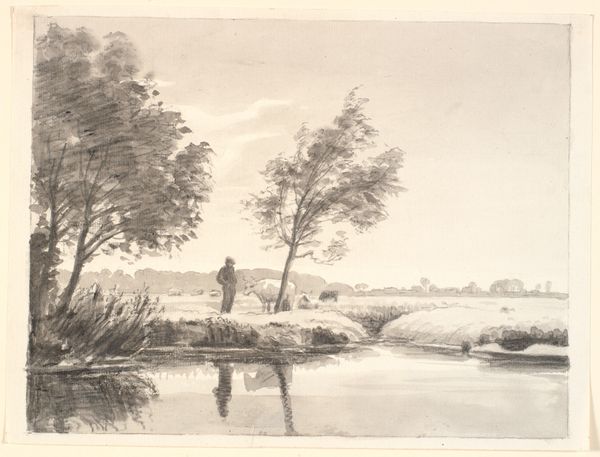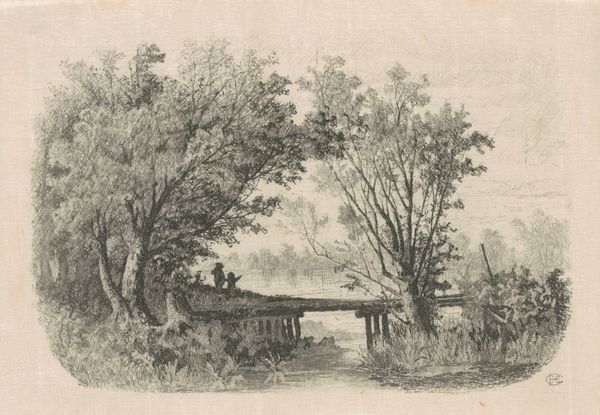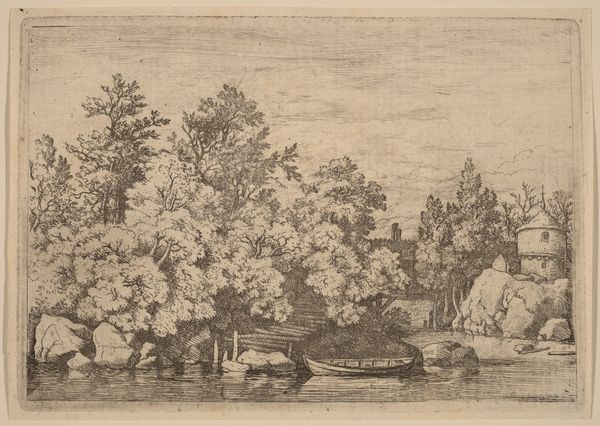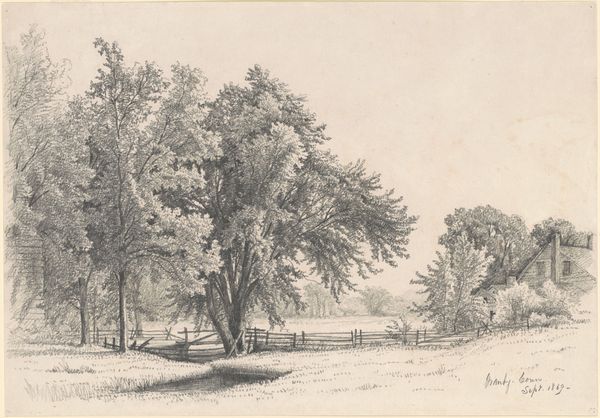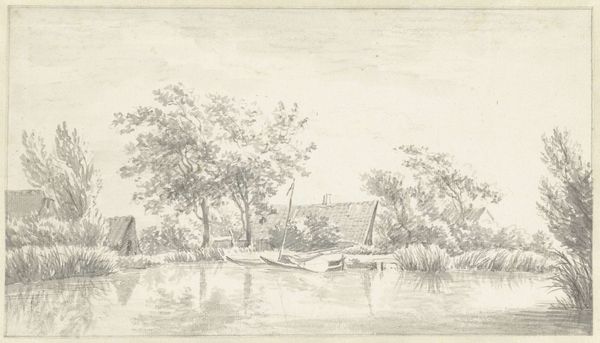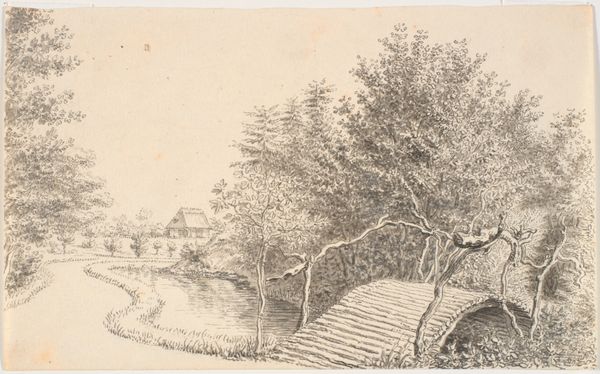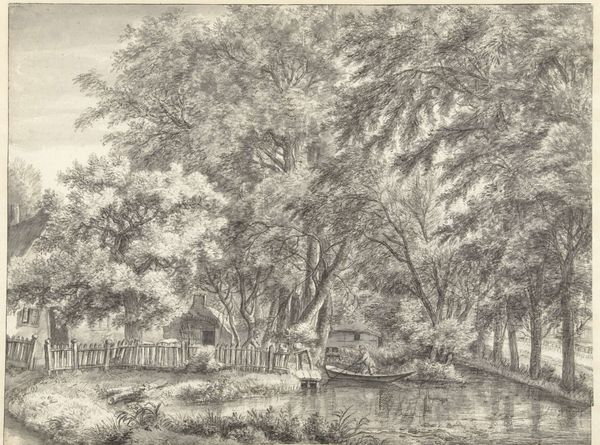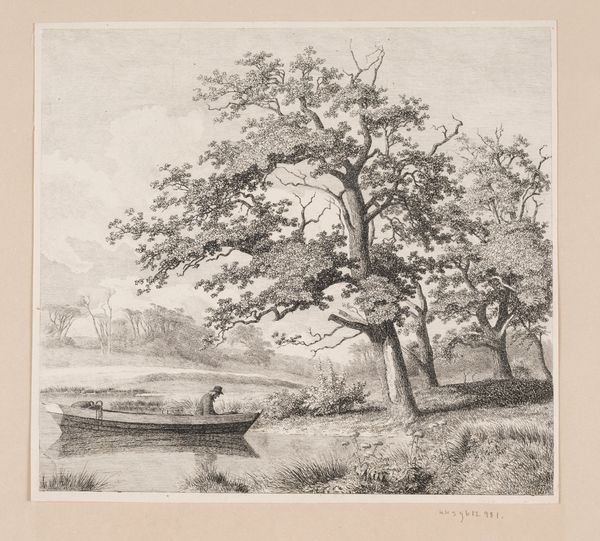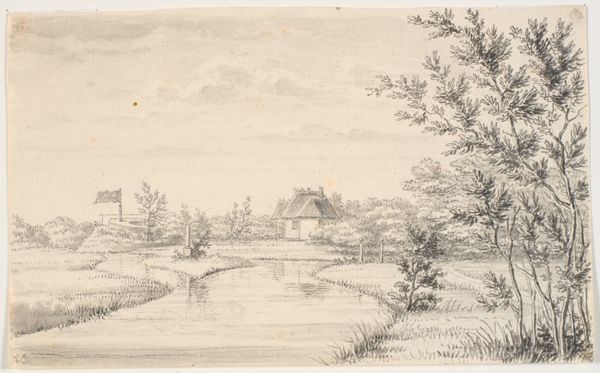
drawing, pencil
#
drawing
#
landscape
#
figuration
#
romanticism
#
pencil
#
line
Dimensions: 104 mm (height) x 166 mm (width) (bladmaal)
Curator: This serene vista before us is entitled "Sanderumgaards have VIII," a drawing executed in 1800 by J.F. Clemens, currently held within the collection of the SMK, Statens Museum for Kunst. Editor: My first thought is stillness, a peaceful retreat into nature, and perhaps an interesting meditation on the contrasts between leisure and labor. Curator: Yes, I agree, there is a palpable stillness. It's interesting to see how Clemens, working within the Romantic tradition, is imbuing the landscape with symbolic meaning. Water, of course, is always potent. Here, it serves as a reflecting pool. Editor: While you look for symbols, my attention goes to the way Clemens achieves such depth and variation with so little. We know he utilized pencil for this, creating gradations of tone through precise application of line. There is also something so fragile and temporary about works on paper; this garden, this scene, exists now only through the act of its rendering. Curator: Note the careful balance Clemens strikes between naturalistic observation and idealised representation. It’s also interesting to observe how Clemens utilizes shadow and light. Look, the human presence within this natural idyll is very intentional, not separate. A visual harmony. Editor: But the human presence on the far side of the canal speaks of another form of labor altogether. A figure is crouched, toiling in the field with a scythe, as three others are being rowed on the water. There is some very material difference at stake between these two classes, two social modes, each with distinct relationships to the means of production. I keep returning to that. Curator: I understand what you mean. It suggests something deeper about the culture, though, beyond that visible act of work. The drawing might present an idealised image of Danish life at the turn of the 19th century, there remains an element of what has come before, almost like the ancestral spirits of the past watching our future from an afterlife. It seems he tried to suggest there can still be spiritual transcendence in the everyday experience and memory through landscape. Editor: Indeed. Clemens’ careful handling of material has conjured not only an atmosphere, but an artifact rife with its own social coding. Thanks to its execution with modest materials, it can offer a peek into past Danish society, from work to modes of transportation. It helps me reflect on class relationships. Curator: This drawing, through its quiet reflection on nature, offers us a view into the long, intertwined history of landscape, representation and experience. Editor: For me, this artwork becomes a testament to the complex stories embedded in the material reality and creative acts around its subject matter.
Comments
No comments
Be the first to comment and join the conversation on the ultimate creative platform.
